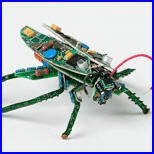When it comes to selecting a microcontroller for Electronics Manufacture, the field to choose from is quite large. And while there is no one right answer to this, there are some basic steps to take to ensure you are using the right core component in your latest Electronics Development Project.
For this post I will walk you through how we go about this process. As I said earlier, there usually isn’t one right answer but this will give you an idea of the process we use.
The first priority to determine is which of the following is critical:
- power consumption
- speed or processing power
- peripherals
- cost
This is how we go about the selection process:
If it is Power Consumption that is most critical, then we go for the TI MSP430 family. These have been designed from the ground up for low power with good processing ability. They also have excellent ADCs and they are fast at 200kSPS.
If it is processing power you want, then the ARM Embedded Processors are great value. They are 32bit and most need dual power supplies but they really deliver when its comes to performance. They also come in a wide range of flavours with peripherals to suit a plethora of applications. We particularly like the offerings from Atmel SAM7 and NXP LPC2000.
If it is peripherals, then it depends on the level of performance and if there are any specific applications. For automotive you will often want a LIN or CAN peripheral and the processing power will depend on whether it is a simple ECU, Body Computer or Engine Management Unit. If it is networking you want then you can get away with an 8 bit processor for some tasks but it is hard to beat an ARM MCU with on board ethernet controller. For this selection criteria, carefully map out what you need and the performance required then look at the secondary factors such as processing power, power consumption and cost.
For cost, we like the Atmel AVR processors. These are also our work horse 8 bit processors. And they also have a good range of peripherals, on board EEPROM as standard, and good power management capabilities.
Now let me also make one other point about cost. It’s not just the component cost, but the complete cost equation. So development costs, part costs, manufacturing costs, and product life cycle support costs. Although there are other parts out there that have lower unit component costs, we find the overall cost to be very good with these MCUs.
So that is a very cursory look at the process of selecting a microcontroller.
Ray Keefe has been developing high quality and market leading electronics products in Australia for nearly 30 years. For more information go to his LinkedIn profile. This post is Copyright © Successful Endeavours Pty Ltd.





